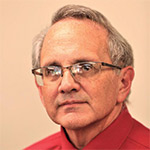Fastest Growing Company C&W Transport records 337% growth
Kenda Burrows
Federal regulators received a clear message Tuesday night, Sept. 13, in Davenport – a proposed train company merger would be horrible for communities and people, and needs to be stopped.
That was one of the main messages delivered during a Surface Transportation Board (STB) public input meeting at the Davenport RiverCenter. That meeting, which attracted more than 200 people, focused on the pending $31…

Get immediate, unlimited access to all subscriber content and much more.
Learn more in our subscriber FAQ.
Do you want to read and share this article without a paywall?
